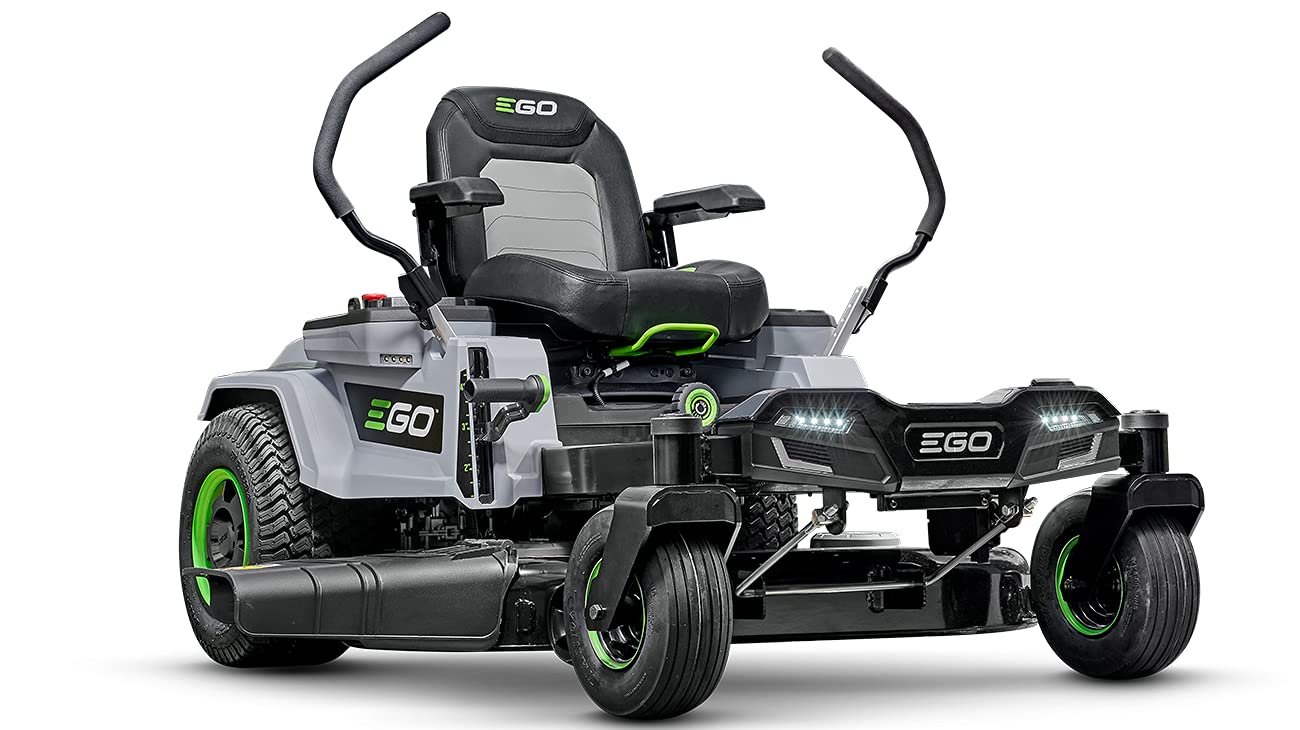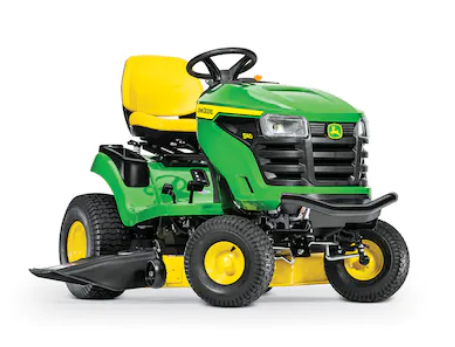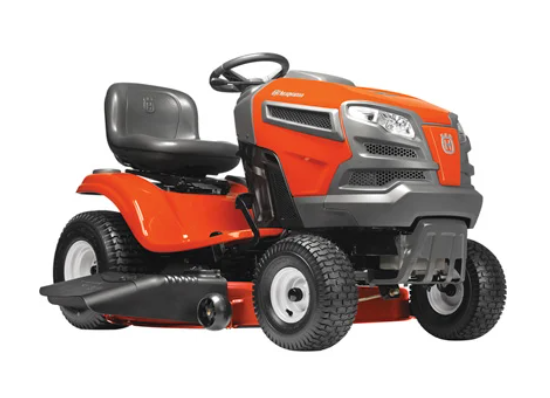As someone who loves to keep my lawn neat, I understand how frustrating it can be when your lawn mower refuses to start. Whether due to a dead battery or a faulty switch, a lawn mower that won’t start can quickly derail your weekend plans. However, don’t give up hope just yet! With a few troubleshooting steps, you can identify and resolve many common issues that prevent a battery-operated Ego push lawn mower from starting.
Step 1: Check the Battery if your ego mower will not start
The first step in troubleshooting a lawn mower that won’t start is to check the battery. Ensure that the battery is inserted correctly and charged. If the battery is low, try setting it thoroughly before starting the mower. A dead battery is one of the most common reasons a lawn mower won’t start, so it’s important to rule this out first.
To check the battery, you’ll need to remove it from the mower. Consult your owner’s manual for instructions on how to do this. Once you’ve removed the battery, inspect it for any signs of damage, such as cracks or corrosion. If the battery appears damaged, you may need to replace it. However, if the battery looks OK, try charging it thoroughly before starting the mower again.
Step 2: Check the Blades on your ego mower
If the battery is not the issue, the next step is to check the blade. First, make sure the blade is attached correctly and not jammed. A loose or damaged blade can prevent the mower from starting. Next, you’ll need to tilt and inspect the mower to check the edge. Again, consult your owner’s manual for specific instructions on how to do this.
Inspect the blade for any signs of damage, such as chips or cracks. If the edge is damaged, it will need to be replaced. However, if the edge looks fine, ensure it is properly attached. If the bite is loose, tighten the bolt or nut holding it. Once you’ve checked the border, attempt to start the mower again.
Step 3: Check the Safety Features if you are having trouble starting your ego mower
Many lawnmowers have safety features that prevent the mower from starting if certain conditions are not met. Check the manual to ensure that all safety features are appropriately engaged. Standard safety features include a dead-man switch, which requires the operator to hold down a button or lever to start the mower, and a blade brake, which prevents the blade from spinning when the mower is not in use.
If your lawn mower has a dead-man switch, make sure you are holding down the button or lever while attempting to start the mower. If the blade brake is engaged, try releasing it and attempting to start the mower again. If the safety features are not adequately engaged, the mower will not start.
Step 4: Check the Connections on your ego mower
Another common issue that can prevent a lawn mower from starting is loose or corroded connections. Electrical connections can become loose or corroded over time, preventing the battery from powering the mower. You’ll need to remove the battery and inspect the terminals to check the connections.
You can clean the terminals with a wire brush or sandpaper if they appear corroded. If the connections are loose, tighten them with a wrench or pliers. Once you’ve checked the connections, reinsert the battery and attempt to start the mower again.
Step 5: Check the Switch
If the above steps do not solve the problem, it may be an issue with the switch. First, test the on/off switch to ensure it functions correctly. If the switch is faulty, it may need to be replaced. To check the
button, you’ll need to use a multimeter to test for continuity. Consult your owner’s manual for specific instructions on how to do this.
If the switch is faulty, you can usually purchase a replacement from your local hardware or home improvement store. Once you’ve replaced the regulator, attempt to start the mower again.
Step 6: Check the Motor
If none of the above steps solve the problem, it may be an issue with the motor. This is less common than the other issues discussed above, but it can still happen. If the motor is faulty, it may need to be repaired or replaced by a professional. Attempting to repair or replace the engine yourself can be dangerous, so it’s best to leave this to a professional.
Conclusion
A lawn mower that won’t start can be a frustrating experience, but with some troubleshooting, you can usually identify and resolve the issue. Start by checking the battery, blade, safety features, connections, and switch. If none of these steps solve the problem, it may be an issue with the motor, which a professional should address.
Remember to always consult your owner’s manual for specific instructions on how to troubleshoot your lawn mower. Then, with patience and persistence, you’ll return to mowing your lawn quickly!
Maintaining a lush and healthy lawn requires regular care and maintenance, and a vital tool in your lawn care arsenal is your trusty lawn mower. While many different types of lawnmowers are on the market, battery-powered push mowers have become increasingly popular in recent years. If you’re using a battery-powered push mower, it’s essential to understand how to troubleshoot common issues to keep your mower running smoothly.
One of the most critical components of a battery-powered push mower is the blade assembly. Over time, the blade can become dull or damaged, impacting the quality of your cut and even damaging your mower. To keep your edge in good condition, sharpen or replace it as needed. You can use a sharpening stone or take it to a professional for maintenance.
Another critical component of your battery-powered push mower is the safety switch. This switch prevents the mower from starting unless certain safety features, such as correctly attaching the blade guard, are in place. The safety switch may have been triggered if your mower won’t be started. Check the blade guard and other safety features to ensure they are correctly engaged before starting your mower.
Corroded terminals can also cause problems with your battery-powered push mower. If the battery terminals become corroded, it can impact the ability of the battery to charge and provide power to the mower. To avoid this issue, keep your battery terminals clean and debris-free. You can use a wire brush or sandpaper to clean the terminals.
If your battery-powered push mower still doesn’t start, there may be an issue with the motor. This can be a more complex issue that requires the assistance of a professional repair service. However, attempting to repair the engine yourself can be dangerous and cause further damage to your mower, so it’s essential to leave this to the experts.
Regular maintenance is vital to keeping your battery-powered push mower in good condition. Follow a regular maintenance schedule, including sharpening the blade, cleaning the terminals, and checking safety features. By caring for your mower, you can ensure reliable and efficient performance for years.
In addition to maintaining your mower, there are other steps you can take to care for your lawn and promote healthy growth. Green landscaping practices such as mulching, composting, and proper watering can help keep your property looking its best. Regular grass trimming can also help promote healthy growth and reduce the risk of pests and diseases.
A battery-powered push mower is excellent for maintaining a beautiful and healthy lawn. Following these tips and troubleshooting common issues ensures that your mower provides reliable and efficient performance. As a result, you can keep your property looking great all season long with care and attention.




